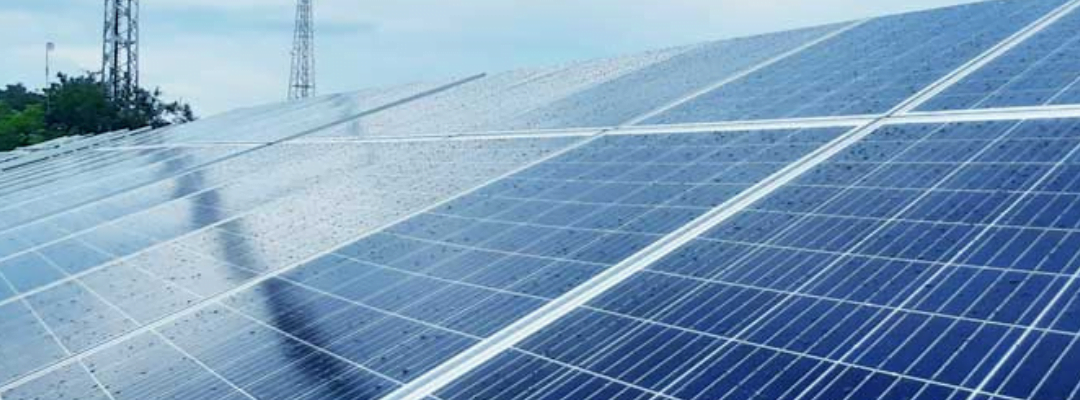With rising electricity costs, solar energy has emerged as an attractive alternative for homeowners. The Indian government actively promotes solar adoption by offering financial subsidies to make renewable energy more affordable.
The Rooftop Solar Programme Phase II has undergone major reforms to simplify the subsidy process, making it easier for homeowners to access financial aid. The National Portal for Rooftop Solar streamlines subsidy applications, ensuring that approved benefits are credited directly to consumers’ bank accounts after installing an eligible solar system.
Solar Panel Subsidy in Madhya Pradesh (2025)
Madhya Pradesh residents can benefit from the Rooftop Solar Programme Phase II, spearheaded by the Ministry of New & Renewable Energy (MNRE). This initiative offers Central Financial Assistance (CFA) to reduce the cost of solar installations.
Who is Eligible for the Subsidy?
The subsidy program is exclusively available for:
- Residential property owners
- Institutions & social sectors
- Not available for commercial, industrial, or public sector entities
Subsidy Structure for Solar Installations (2025)
The government provides fixed subsidies based on the solar system’s capacity:
| Solar System Size | Subsidy Percentage | Subsidy Amount (₹) |
| 1 kW – 3 kW | 40% | ₹18,000 per kW |
| 3 kW – 10 kW | 20% | ₹18,000 per kW (first 3 kW) + ₹9,000 per kW thereafter |
| Above 10 kW | – | ₹1,17,000 (fixed) |
| GHS/RWA (up to 500 kW) | 20% | Based on system capacity |
How to Apply for a Solar Subsidy in MP?
The Indian government aims to install 4 GW of residential solar capacity by 2025. To simplify the subsidy process, homeowners can now apply online via the National Portal for Rooftop Solar.
Step-by-Step Process to Apply for a Solar Subsidy
- Register on the National Portal → Visit solarrooftop.gov.in and sign up using your email & mobile number.
- Submit Application → Fill out the subsidy application form, including details about your solar system and bank account.
- Approval by DISCOM → Your local electricity provider will review and approve your application.
- Install Solar System → Choose an MNRE-approved vendor to set up your rooftop solar plant.
- Inspection & Net Metering → A DISCOM official will verify your installation and install a net meter.
- Subsidy Disbursement → After approval, the subsidy amount will be credited to your bank account within 30 days.
Eligibility Requirements for MP Solar Subsidy
To qualify for the solar subsidy in MP, homeowners must meet the following criteria:
Use Locally Manufactured Solar Panels
- Solar panels and solar cells must be made in India.
- Panels should be BIS-certified and listed in the ALMM database.
Install an On-Grid Solar System
- The subsidy applies only to grid-connected solar systems (without battery storage).
- Homeowners can add batteries, but the cost won’t be covered under the subsidy.
Hire an MNRE-Approved Solar Vendor
- The solar system must be installed by an MNRE-certified vendor.
- Vendors handle site assessment, permits, and system maintenance.
Benefits of Solar Panel Subsidies in Madhya Pradesh
Solar subsidies significantly lower installation costs, making renewable energy more accessible. Here are the key advantages of installing a subsidized rooftop solar system:
Lower Electricity Bills
- Solar panels generate free electricity for 25+ years.
- Most homeowners recover installation costs in 6-8 years, after which electricity is free.
- Excess solar energy can be sold back to the grid, earning solar credits.
Uninterrupted Power Supply
- Rooftop solar ensures a reliable electricity source even during power cuts.
- Adding an external battery can store surplus energy for nighttime use.
Energy Independence
- Homeowners reduce dependence on the grid, cutting energy costs.
- Advanced solar panels generate more power with fewer panels.
Solar System Price in Madhya Pradesh (With Subsidy)
The cost of installing a solar system depends on various factors, including:
- Solar Panel Quality & Efficiency → Higher-efficiency panels provide better returns.
- System Capacity → Larger systems require more panels, increasing upfront costs.
- Installation Complexity → Roof type, angle, and shading affect setup costs.
Estimated Cost Breakdown (Post-Subsidy)
| Solar System Size | Market Price (₹) | Subsidy Amount (₹) | Final Cost (₹) |
| 3 kW | ₹1,80,000 | ₹54,000 | ₹1,26,000 |
| 5 kW | ₹3,00,000 | ₹81,000 | ₹2,19,000 |
| 10 kW | ₹6,00,000 | ₹1,17,000 | ₹4,83,000 |
How to Choose the Right Solar System for Your Home?
Before installing a solar system, consider these key factors:
- Monthly Electricity Consumption → Determines the system capacity needed.
- Available Roof Space → Ensure adequate space for solar panel installation.
- Budget & ROI → Higher efficiency panels offer better long-term savings.
- Local DISCOM Approval → Check your state’s net metering policy.
Frequently Asked Questions
1.How much roof space is needed for a 1 kW solar system?
A 1 kW rooftop system requires 10 sq. meters of shadow-free area.
2What is Net Metering & How Can I Benefit?
- Net metering allows homeowners to sell excess solar energy to the grid.
- Earn solar credits to offset future electricity bills.
3.Can a Solar System Work During Power Cuts?
- Standard on-grid systems shut down during blackouts for safety reasons.
- Adding battery storage ensures power backup during outages.
4Can I Run My Entire Home on Solar Power?
- Yes! With battery storage, you can achieve 100% energy independence.
- However, remaining grid-connected is necessary for the subsidy.

